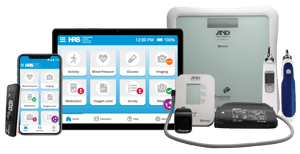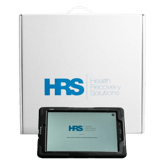
"Our experience shows that in a short period despite lack of resources, telehealth and RPM's concurrent use with a third-party vendor could be successfully utilized for safe discharges with high patient satisfaction."
Using HRS’ ED Diversion and Triage Playbook, learn how to leverage telehealth and RPM to maximize staffing resources
Health Recovery Solutions’ Emergency Department (ED) Diversion and Triage Playbook serves as a blueprint for how to strategically apply telehealth and remote patient monitoring (RPM) services to divert patients from the ED.
Address the staffing shortage in your organization by allowing patients to be treated at the appropriate level of care. Triage patients and allow them to recover at home with the support of telehealth and RPM, connecting them to a provider. Decreasing ED surges allows staff to treat the most acute patients at the right time and manage staff shortages. Monitoring patients' at-home recovery will reduce the number of unnecessary ED visits and rehospitalizations—ultimately decreasing the strain on hospital staff.
Reduce daily operational costs and conserve critical resources, such as personal protective equipment. Ensure the highest acuity patients receive the appropriate care and resources necessary, and elective services remain available.
Connect patients to their providers through telehealth and RPM to increase care plan compliance and patient satisfaction. Patients that are more connected to their provider establish a relationship and trust that make them more apt to take the advice of the provider if a future intervention is needed. This relationship keeps patients engaged in their health and connected to all the services offered in your health system.
Download the ED Diversion and Triage Playbook
Health Recovery Solutions offers multiple platforms that allow your team to screen and identify eligible patients, remotely monitor patients’ symptoms and recovery, and increase staff efficiency.


A case study with FirstHealth of the Carolinas, enrolling nearly 200 patients, showed this model could prevent ED admissions and safely divert patients to home monitoring via telehealth and RPM. In addition, the program showed great patient satisfaction, staff, and physician satisfaction.
"Our experience shows that in a short period despite lack of resources, telehealth and RPM's concurrent use with a third-party vendor could be successfully utilized for safe discharges with high patient satisfaction."